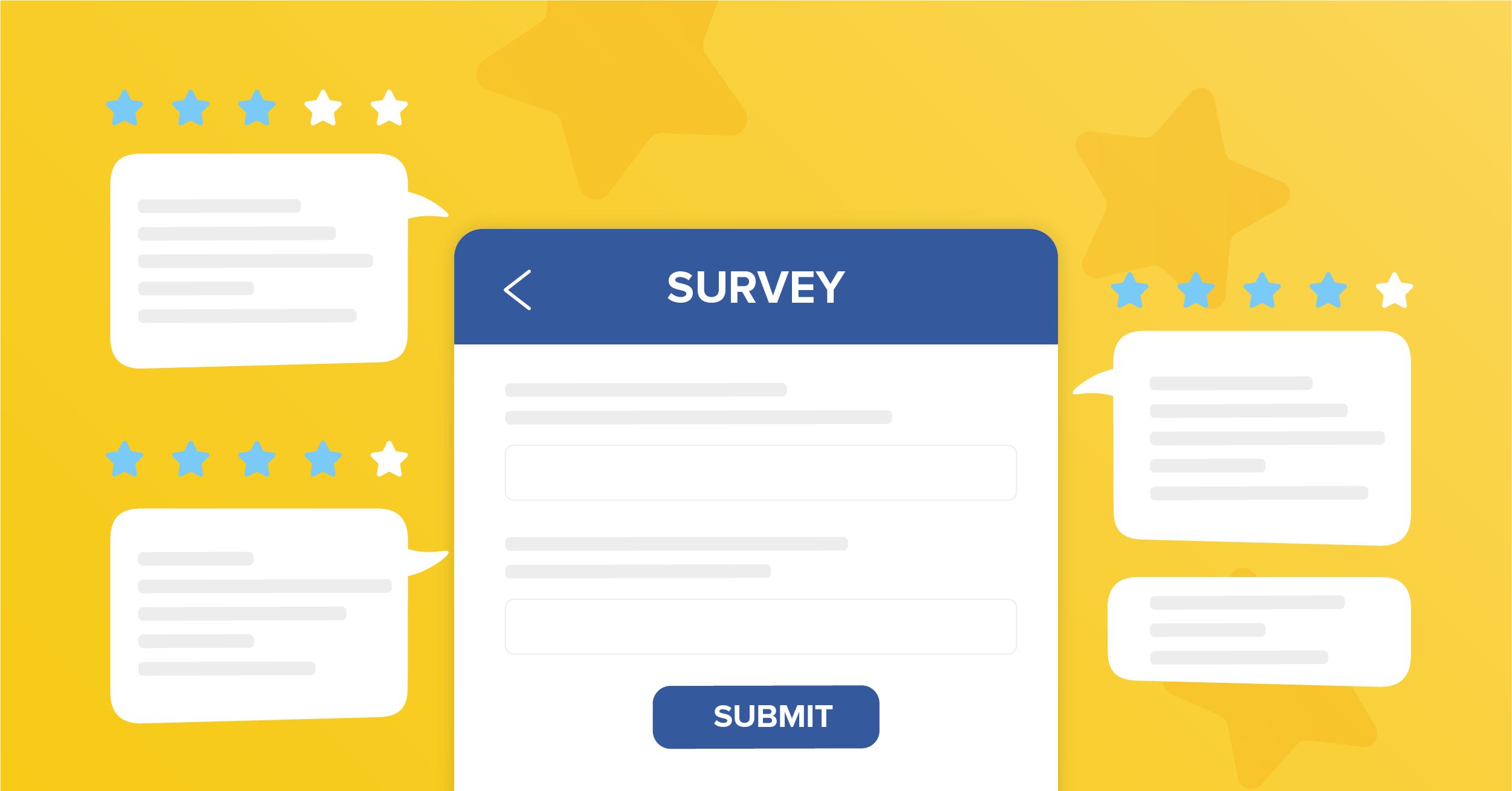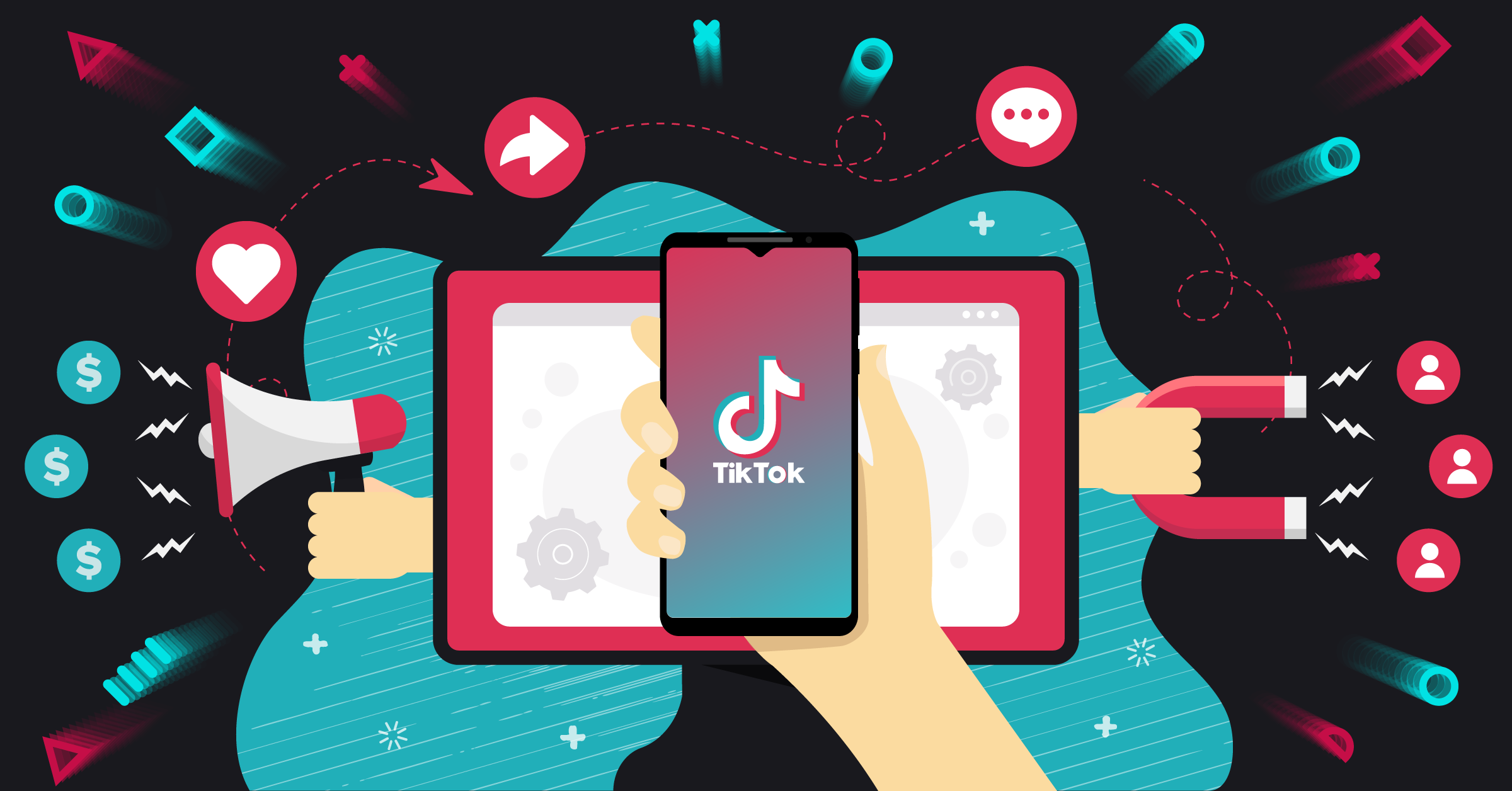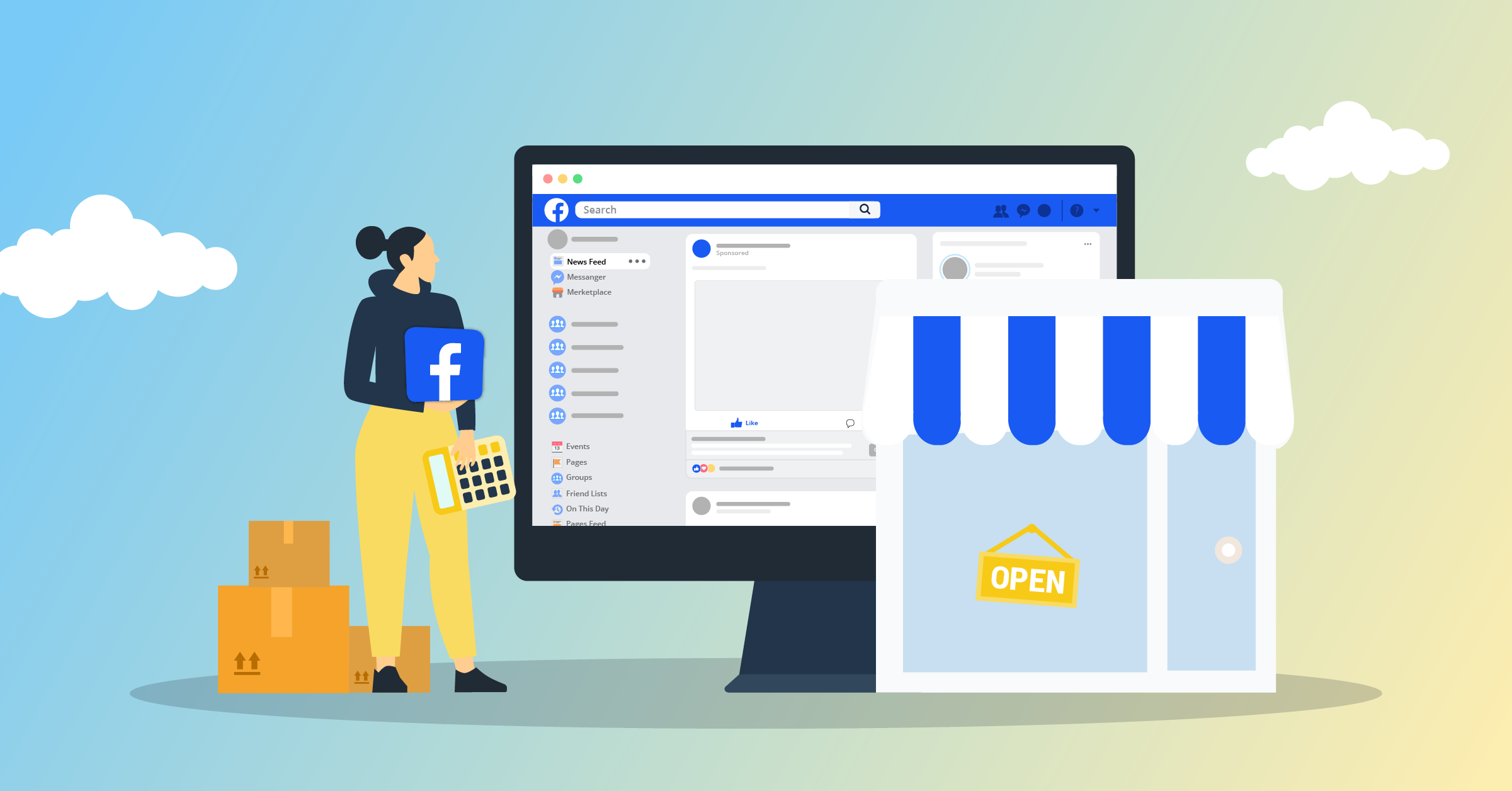
Customer surveys are an incredibly important part of a company’s journey to understanding their audience. We’ve all seen them pop up on websites or in our inboxes, but what does it take to create a customer survey?
If you’re an avid internet user, in addition to coming across many surveys, you’ve undoubtedly seen quite the variety of them, too. As it so happens, this isn’t by accident. In fact, the way these surveys are worded, layed out, and delivered are usually very precise.
The goal of today is to showcase some incredible surveys, go over some do’s and don’t’s, and learn a thing or two about how to create an effective survey. We’ll start with the basics, learn from some experts, and work our way to becoming experts ourselves. Let’s get this ball rolling.
How to create a customer survey
To start things off, let’s talk more about where your surveys can be created. Is it an online tool? An in-house solution? A third-party extension? The answer to all those questions is yes. Customer surveys can be created in many different ways, all of which is completely up to the company itself. Some of the more popular tool for creating customer surveys are:
- SurveyGizmo
- SurveyMonkey
- Branded Surveys
- LeadQuizzes Survey Maker
- Typeform
- Google Forms
- Zoho Survey
Of course, these are just a few, and there are many to choose from out there. It’s up to you to find the one that suits your needs and goals. Incorporating customer feedback tools can streamline the process, helping businesses efficiently collect, analyze, and act on feedback to improve their products and services.
Now the question shifts from how to simply create a customer survey to how to create an effective one. The answer to that lies below, but be prepared, because it’s not as cut and dry as you might be led to believe. There’s a lot of psychology behind the madness and even more technicality. Don’t worry, we’ll cover it all.
Transactional survey vs relationship survey
Before we go any further, it’s important to distinguish the difference between a transactional survey and a relationship survey. Although there are other styles of surveys out there, like surveys for money, these two are some of the most popular and they both rely on the ever-important customer feedback. and need to be differentiated to avoid confusion.
Transactional survey examples
Transactional surveys are designed to measure the specifics of an interaction with a customer. There are a few good examples of such interaction: Product delivery, customer support interaction, or specific website interactions.
We’re all probably very familiar with this style of survey whether we realize it or not. In fact, if you check your inbox now, there might be a few waiting. Oftentimes, these surveys include questions like:
- On a scale of 1-10, how would you rate your experience with our customer service?
- How do you feel about the following statement: It was easy to find what I was looking for.
- Are you happy with the product that you purchased?
Truthfully, there are a number of questions that transactional survey examples could contain, but their goal is always the same. Each example above is focused on a specific aspect of the customer’s interaction with a brand. As such, each question’s aim is to find out if customers are happy with that aspect and give insight into how a company can improve it.
What is a post transaction survey?
A post transaction survey is designed to gain insight specifically in regards to customer satisfaction with any service interaction. Some might consider transactional surveys and post transaction surveys to be the same. Certainly, they are very similar, but the difference is in the details. A post transaction survey aims to:
- Measure customer satisfaction with a specific transaction
- Determine the most important factors that influence transaction satisfaction
- Calculate the impact of customer loyalty on transaction satisfaction
- Connect research to action by discovering satisfaction-inducing actions
- Connect research to financial measures to see if there’s a link between branch post-transaction satisfaction and financial indicators like branch deposit growth
Relationship survey examples
As the name suggests, a relationship survey aims to measure the strength of the relationship between a customer and a brand. These surveys usually focus on things like referral potential and customer loyalty, including questions like:
- How likely are you to shop with us again?
- On a scale of 1-10, how likely are you to recommend us to a friend?
- Please rate your overall satisfaction with our brand.
From these relationship survey examples, you can see that the end goal of asking these questions is much higher-level than those of the transactional survey. Instead of focusing on a specific aspect, the relationship survey aims wide and hits on a much larger target overall.
How to score a yes or no survey
Although transactional surveys and relationship surveys are the two most common examples out there, there’s another survey that is widely used, too. The yes or no survey takes a mix of all the basic questions and gives the customer only two possible answers: yes or no.
Much like the relationship survey, the answers that are gathered from this type of survey are very high-level, meaning you will only get the very basic information out of them.
This leaves us with the issue of how to score a yes or no survey. If you only have two options, how much information can a company really stand to gain from such a simple survey? Well, depending on the question, the answer is actually a lot.
Scoring a yes or no survey is all about the percentages. If you ask the question “Would you recommend our company to a friend?”, and the answers are overwhelming yes, then you know that you’re on the right path. If the answers are overwhelmingly no, then you have a lot to consider.
You have a lot of new customers that aren’t happy. This means that your advertisements are reaching the right people, but they either aren’t happy with the actual product/service, or they aren’t happy with the experience.
See how insightful a simple yes or no survey can be?
All you have to do to score a yes or no survey is take the total tally of yes answers and no answers and then divide it by the total number of participants. Once that’s done, you should have some fairly revealing numbers that will help you drive future growth.
How to create an effective survey
A customer survey is no good if it doesn’t give the business some tangible information. This information needs to align with a goal and be used towards the growth of the company. Growth can sometimes be confused with profit. True, profit is a big plus, but understanding what your customers need and how you can deliver that to them is the ultimate idea of growth.

So when the word effective pops up in your head, it may very well be a different definition from someone else’s idea of effective. Effective in the sense of a survey means a survey that gathers a lot of information that helps you in your growth.
One of the best ways to remain effective when it comes to creating a customer survey is to use a platform that allows you to better manage your survey and its collected data by integrating it with another marketing tool.
At LeadsBridge, the biggest advantage to integrating a survey platform — such as Typeform, Zoho Surveys, SurveyGizmo, and Google Forms — to another marketing tool like a CRM is that you will completely avoid having to deal with CSV files. No longer will you need to manually import files over and over. Once the connection is made, you can sit back and wait for the data to come in.
Effectively, LeadsBridge allows you to maximize your lead ads flow by automating the process and allowing you to make accurate decisions based on current data. Instead of wasting time dealing with CSV files, the data comes in as soon as the lead is collected from platforms like Facebook Lead Ads, allowing you to act immediately, instead of days later when the lead has gone cold. Not only is our platform great for surveys, but efficient in collecting lead data in general.
What are the steps in creating an online survey?
All that being said, what’s the best way to create an effective customer survey? In truth, there are many layers to a create a customer survey, and many steps along the way. Let’s start with the element that every survey has — Questions.
Create meaningful customer survey questions
Arguably, the headline above can be quite subjective. After all, how can a question that’s meaningful for your business be meaningful for others? Yes, there are a few universal questions that can be used in most, if not all surveys, but what about the ones that actually help your business?
In order to create a customer survey that works, you have to evaluate and understand your goals. That being said, the first thing you need to ask yourself before crafting the survey is “What is the goal here?” The goal of the survey should be the ultimate focal point at all times.
As an example, let’s say that you’re trying to understand what makes you stand out as an Email automation service, and what you can do to better the UI. Well, it wouldn’t make much sense to ask your users what their preferred method of payment is. To the user, this is most likely the least of their concerns. If you can provide a unique product that outshines the competition, then they’ll most likely use whatever payment method they need.
In addition to this point, you’ll want to avoid using too many multiple-choice questions, and instead, use open-ended questions. Although multiple-choice questions will give you some insight, they restrict the user from expressing how they really feel. Using an open-ended question format will allow them to use as much or as little detail as they see fit.
From this single question, we understood how customers viewed us and got some incredible answers that we will cherish and use for years to come.
Each and every question on the customer survey should be aimed directly at the heart of the goal. Everything else is just a distraction and just an obstacle for you and the user. To that extent, your aim should be to keep the survey as short as possible.
Ask one question at a time
Too often, businesses use questions in the customer surveys they are actually 2 or 3 questions in one. For the sake of simplicity, this is not a good idea. It’s easy to confuse the customer with questions that require several answers.
For example, take a look at this series of questions:
“What do you like about our company? What don’t you like? What would you change?”
This (or some iteration of it) is found all too often in customer surveys. Something like this causes the reader to not only answer multiple questions at once but to go back and read the question(s) over and over again. It’s inconvenient, to say the least.
So with that said, in addition to keeping the survey itself short, try your best to keep the questions themselves short, too.
Avoid assumptions
One of the most distasteful things to do when you create a customer survey is to assume things about your brand. It may not seem this way to everyone, but take a look at this example from SurveyMonkey:
“We have recently upgraded SurveyMonkey’s features to become a first-class tool. What are your thoughts on the new site?”
Although the team behind SurveyMonkey meant no harm with this question, imagine a customer that’s seeing this for the first time, and is having a genuine issue with the platform. They might see this as an insult.
The issue with this question is that SurveyMonkey (or at least the team that created this question) assumed too much. They went into this thinking that they were the premier choice of survey software for everyone when the reality was that they weren’t.
Questions, in addition to being mostly open-ended (minus a few exceptions. Don’t worry, we’ll talk about that in the next point), and short, need to be directly related to the question at hand. Do not make any assumptions!
Yes/no questions. When do we use them?
Yes/no questions are very useful if implemented correctly. The truth is that not every question needs to be open-ended. Let’s look at an example:
“Do you feel that our service is making you happy?”
With this question, if they answer yes, then that’s great! Everyone wants a yes to a question like this. But, if they answer no, then that’s when you ask them to elaborate:
“What can we do to make your experience better?”
Again, a short and simple question, but because of the simple yes/no answering system from the previous question, you’ve now separated the people that are and aren’t happy with your service. The people that are happy can move on to the next question, and the people that would like something different from you have a chance to explain themselves.
How to conduct a proper survey
A proper survey has to be methodically thought out. The number of questions, the types of questions, and so on. For us at LeadsBridge, we thought about this a great deal.
We came to the conclusion that we needed to ask a fair few questions in order to get the information that we need. Of course, our example might be considered a bit extreme, as the survey was only filled out by a select few people.
A good rule of thumb is to start with 10 questions. 10 seems to be the magic number in the customer survey world because it allows you to gather a decent amount of information, but it’s not so many questions that the customer will get overwhelmed at first sight. If you’re looking for a secure and efficient way to gather feedback, an anonymous online survey can encourage more honest responses from participants.
When you create a customer survey, you have to do more than just come up with clever questions. In order to conduct a proper survey, the timing has to be perfected, too.
How do you know when to send the survey? Monday or Friday? How many times per year? At the end or beginning of the quarter?
These are all valid questions that many businesses conducting the survey need to ask themselves. To be honest, it does depend on the company, but there are a few things to consider.
The first thing to consider is how to get the customers to take the survey. For this, it’s a good idea to offer incentives. Whether it’s a discount on your product, a gift card, or a chance to win a massive prize, something needs to be offered.
With this in mind, you do want to be very careful. Offering a chance to win the newest iPhone for taking a survey about a lawn care business might attract some people that aren’t really interested in making your company better. They just want that iPhone.
Now the timing. What day is best to send a survey? This is going to depend on your audience. It will definitely take some A/B testing to understand when your audience is most active. On top of that, you’ll need to determine when is best to send the initial email and then the follow-up email. According to a survey done by SurveyMonkey, the best day to send a survey is Monday.
So, just like the questions, the timing and the incentive have to be carefully thought out.
How do you develop a customer survey: LeadsBridge Story
We were recently acquired by an amazing company called ActiveProspect. Because of this, we wanted to understand how we could push our platform far beyond its current limits. For that reason, we decided to conduct the survey that we’ve been referring to in this article.
The best way to explain something is always going to be through examples. With LeadsBridge, our goal was to better understand how users are using our platform, what other tools they use in their marketing stack, and what they are looking for in LeadsBridge.
For this purpose, we used Google Forms. Within this survey, we experimented more or less. We used many questions that gave us amazing answers and insight, and then we used some that really served as a test more than anything.
Let’s start with what we learned. We used many yes/no questions, open-ended questions, multiple-choice questions, and so on.
To no one’s surprise, the open-ended questions brought us the most insight. Here’s a good example:

This question alone gave us such amazing answers. We had such eye-opening responses that we decided to change our website headline. It’s responses like those that let you know that the feedback from customers really counts for something!
A great strategy when it comes to finding out what your customers want from you is to just straight up ask. Take this question from our recent survey for example:

This question alone gave us such amazing answers. We had such eye-opening responses that we decided to change our website headline. It’s responses like those that let you know that the feedback from customers really counts for something!
A great strategy when it comes to finding out what your customers want from you is to just straight up ask. Take this question from our recent survey for example:

This question does have a multiple-choice section based on our most requested features, but it also allows them to elaborate at the bottom. The truth about it is that you will never know what your customers are looking for if you don’t ask.
With this question, we got some pretty insightful and amazing answers and features that we will undoubtedly implement in the coming future. Features that we probably wouldn’t have thought about unless we conducted this customer survey.
On the other hand, we have this one:

Although this one did give us a few answers, it never allowed users to explain themselves. Don’t like us? Why? Really like us? Why? True, it gave us some details about our audience, but beyond that, we have no way to know what we’re doing right and what we’re doing wrong based on this question.
Of course, we won’t show you every single question on the survey, but these are two really good examples of seemingly simple questions. One was open-ended, directed right at our goal, and produced amazing results. The other was still directed at our goal but didn’t allow us to act on the outcome.
Conclusions and takeaways
In order to create a customer survey, you have to be aligned from top to bottom. Before the first question is even drafted, you need to understand the goal of the survey and have a plan for what to do once the survey is complete.
In the end, customer surveys are an incredibly powerful tool for not just marketing and advertising purposes, but for the entire company. They are as robust and detailed as you want them to be.
Depending on the information received from a customer survey, you can make some serious changes to better your company, workflow, and service that you provide. No matter what sort of data you get back (positive or negative), by using a customer survey, you get game-changing information directly from the source: your customers.
If you’d like to learn more about the LeadsBridge Customer Survey solution, don’t forget to check out all the amazing integrations that we offer, and test some of them for yourself.









